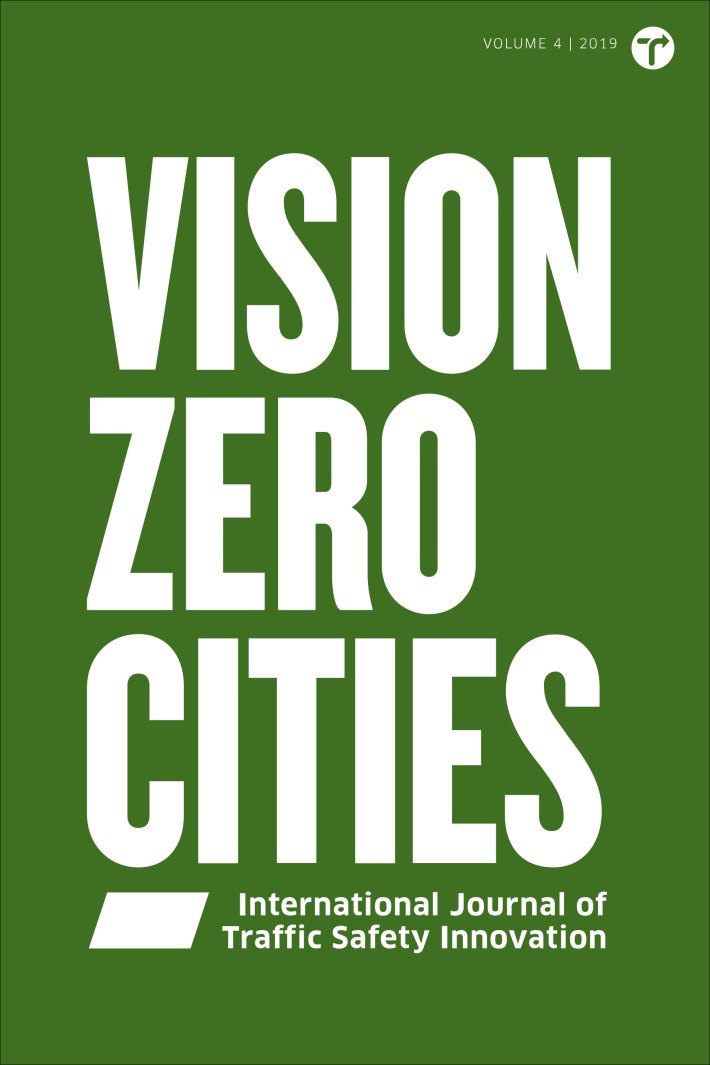The Small-City Vision Zero Challenge
12:01 AM EDT on September 23, 2019
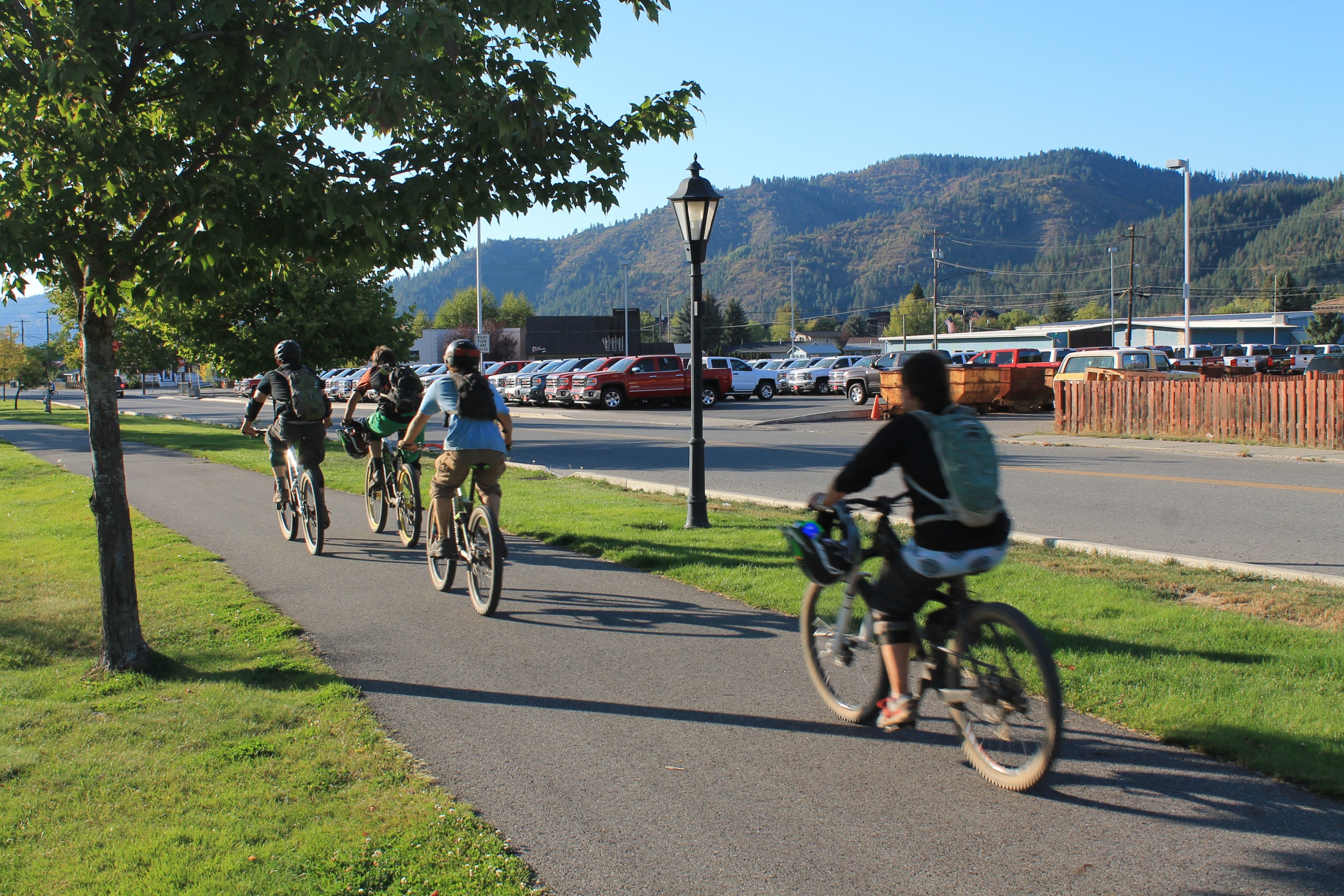
Biking on a trail in Kellogg, Idaho. Photo: Don Kostelec
In the United States, early adoption of Vision Zero occurred primarily in large cities and sprawling urban centers, such as New York, Los Angeles, and Chicago, while small cities lagged in their ability and willingness to adopt the traffic-safety model. In this excerpt from the Vision Zero Cities Conference Journal, urban planner Don Kostelec examines the challenges of Vision Zero for small cities and offers solutions from those that have taken it up. Transportation Alternatives's Vision Zero Cities Conference will take place in Manhattan from Oct. 10-11.
Successes may vary as much as advocates’ consternation over the speed of implementation, but the largest metro areas in the United States tend to play a better game of Vision Zero.
From the sizable budgets required to roll out a new initiative in short order, to the focused, progressive will it takes to push elected officials to do the right thing, smaller U.S. cities lack the critical elements that have helped Vision Zero get off the ground in other places.
But the people who live and move about smaller cities have no less of a right to safe mobility as those in larger metropolitan areas. Tailoring Vision Zero to smaller cities presents a unique challenge to America’s small metropolises.
The challenge
Wes Marshall, a transportation engineer and researcher at the University of Colorado Denver, conducts research studies on street design and land-use-development patterns pertaining to traffic safety. His advice for smaller cities is to focus on fundamentals, such as slowing motor-vehicle speeds.
“Instead of focusing on an intersection or corridor, smaller cities need to look at Vision Zero through a specific lens,” Marshall says. “Can children get to the school or park safely by walking or bicycling, and what is the network they need to do so?”
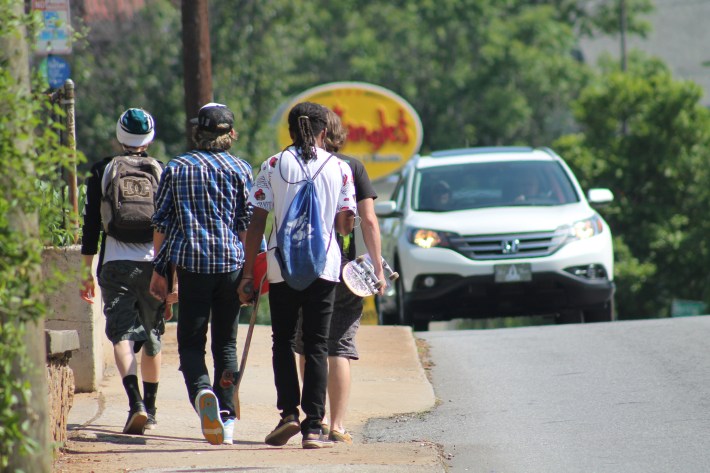
Marshall points out that larger metro areas, specifically central cities, have greater and more varied on-street activity, so it is easier to spot and address a pattern of severe and fatal crashes. The challenge for smaller cities is the lack of crash data due to a lack of activity. “Unsafe streets and networks make an area’s crash record look great simply because there’s nobody walking or biking there,” Marshall explains. “Therefore, if we just look at where crashes occur, we never identify places where people don’t feel safe.”
Anchorage, Alaska
Anchorage (pop. 295,000) completed its Vision Zero planning in late 2018 and is now moving into the implementation phase. After the city launched some frank conversations on traffic safety, officials developed a plan to bring Vision Zero to Anchorage. Without a larger city’s pool of data, a narrative lens provides context.
Anchorage’s “Safer Streets for Everyone” plan starts with a letter from Mayor Ethan Berkowitz, stating, “Our goal is achieving zero traffic deaths, and we can, by taking a data-driven and coordinated approach to designing safer streets, public education, adopting and evaluating best practices, and enforcing effective laws.” The letter also includes an acknowledgment of Anchorage’s seasonal challenges, noting there is a “lack of real, protected, and plowed bicycle lanes and pedestrian pathways,” as well as a “lack of compassion for walkers in the cold.”
As their plan states, “Human stories are an important piece of the puzzle to provide quantitative data.” Anchorage documented those stories during its planning phase. One resident described being a pedestrian as suspect: “Anchorage is not a walking community: if you are walking, you are perceived as suspicious.” Another notes that what happened in the aftermath of crashes was problematic: “There is a lot of victim blaming.” There was an understanding, however, of the core problem: the need of the city “to humanize pedestrians and shift to a culture of respect for them.”
While Vision Zero in Anchorage is just getting started, approaching traffic safety through the residents who live there is a lens that can help outline problems and solutions where data is lacking.
Durham, North Carolina
The challenge for small cities in North Carolina is a state department of transportation that plays an overarching role in local street design and funding. State-controlled highways in North Carolina are not designated as interstates, U.S. highways, or state highways, but are instead referred to as “state secondary routes.” Some of these state secondary routes fall within city limits. These are typically wide, fast roadway types that would, in other states, be fully controlled by the city rather than the state.
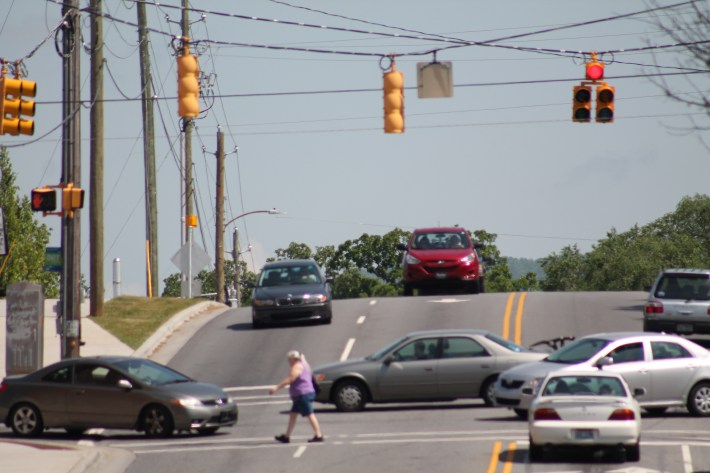
As a result, the North Carolina DOT manages a higher percentage of centerline miles inside cities than other state DOTs. This creates a cycle of dependence on the state agency for street-design guidance and funding. As a result of the state DOT’s hegemonic presence, North Carolina cities tend to adopt the state DOT’s standards as their own, not wanting to spend resources on developing local standards and assuming the state has done its due diligence when it comes to safety. A state effort, “North Carolina Vision Zero,” has so far been little more than a traditional education- and enforcement-based traffic-safety campaign, and does not involve project design efforts or state standards.
In 2017, Durham (pop. 267,000) decided to break the mold. The city launched a Vision Zero effort with the goal of remedying these issues and dealing locally with local traffic-safety problems. While the city has moved forward on a couple of fronts, Durham has become subject to an issue common to small- and medium-sized cities: turnover of staff. Durham’s director of transportation launched the city’s Vision Zero initiative in 2017, but 15 months after the launch took a job in another state.
Caldwell, Idaho
People interested in building momentum for Vision Zero in smaller cities may take a more bite-sized approach, as Wes Marshall recommends. This is what is now occurring in Caldwell, Idaho (pop. 55,000), after the United Way of Treasure Valley took a unique interest in working with Caldwell on a variety of health and transportation-safety efforts.
In 2017, Caldwell hosted a two-day Vision Zero workshop for elected officials, law enforcement, health-department employees, and city staff. After the sessions and a series of community walkabouts, it was determined that no single roadway in Caldwell showcased a Vision Zero street. Rather, Caldwell had piecemeal, individual components on a variety of streets that could be packaged together to showcase what Vision Zero meant: There were curb extensions downtown, pedestrian hybrid beacons for school-zone crossings, and an ongoing conversation about lowering speed limits throughout the downtown area by taking control of a state-managed road.
The Caldwell Police Department made the connection between Vision Zero and their roundabouts. They noted that the continued building of roundabouts, which self-enforce vehicle speeds, have almost solved traffic-safety issues at those intersections, allowing them to devote resources to other critical needs.
Conversely, Simplot Boulevard, a five-lane state highway through an industrial area on Caldwell’s west side, was so poorly designed that it made police officers fear for their own safety when they pulled someone over. In a short stretch of roadway, Simplot Boulevard has three different speed-limit expectations (35, 45, and 55 mph) without any change in the street’s design configuration to self-enforce those speeds.
The United Way is now funding an update to Caldwell’s "Active Transportation Plan" to incorporate into its recommendations more modern street design, such as protected bike lanes and other Vision Zero elements. That effort kicks off in late 2019.
Small City Solutions
Vision Zero is by no means impossible in small cities; there is just a different path to success. Instead of the top-down approach employed by many large cities, advocates in small cities may need to search out their own solutions to help local officials see the light. To do that, advocates will need to reach out to larger Vision Zero Cities, educate themselves, and change local standards to meet their small city’s needs.
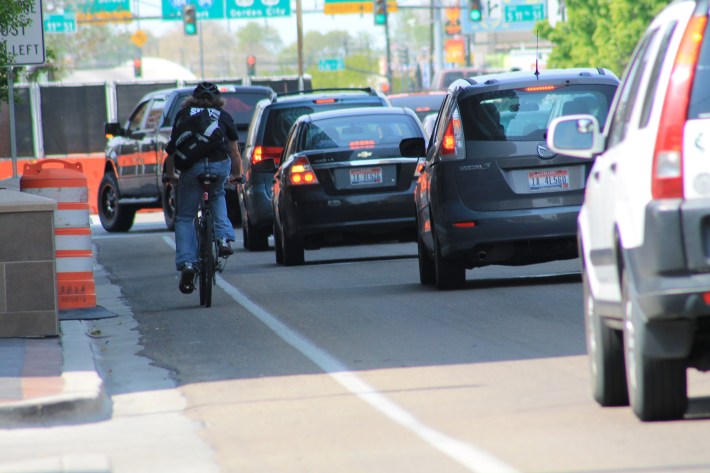
Residents of smaller cities looking to take up Vision Zero should first aim to learn their local processes. Getting involved early in a corridor study or project design effort is critical. Find the milestones within your local agency design processes where you can influence change, work your way onto advisory committees, or ask agencies to put their bicycle and pedestrian advisory committee members on consultant selection panels and steering committees for projects and plans. Another important step is advocating for changes local standards. A common default position by road designers is that they “follow federal standards” for street design. But these are only guidelines, and small cities may adopt their own standards. There is no federal mandate for vehicle level of service, speed limits, or motor vehicle lane widths. Advocating for change in these local standards is important, and full of potential. Change may require only a few votes of a city council.
Advocates can start their path to changing local standards at the library. Federal design guides published by the American Association of State Highway and Transportation Officials are the go-to resources that agencies and street designers use to influence their decisions. Work with your library to order guides like the "AASHTO Green Book" and their "Guide for Achieving Flexibility in Highway Design" for the reference desk. The subject matter dealing with vulnerable road users is not overly complex, and local agencies often do not own their own copies of the bicyclist and pedestrian guides. This knowledge will give you an advantage in your advocacy efforts.
With knowledge and potential in hand, advocates should develop a menu of choices for local Vision Zero projects. Collect images of the positive features on local roadways and develop a visual catalog of desired features that could be incorporated to achieve a Vision Zero design. Present it to the city council, the planning and zoning commission, and during public meetings to show what Vision Zero could mean for the city. The social media and neighborhood networks in smaller cities may be less robust, but they can be equally organized and motivated. Employing these networks is key to making Vision Zero work in smaller cities. Additionally, the wider Vision Zero network can help to counter claims of “we can’t do that.” Images of Vision Zero strategies in other cities from around the country can be used to your advantage.
It is high time for Vision Zero to become synonymous with small cities, too. Anchorage, Caldwell, and Durham are leading the way. Is your small city next?
Read More:
Stay in touch
Sign up for our free newsletter
More from Streetsblog USA
You Wouldn’t Like Monday’s Headlines When They’re Angry
Which state has the worst road rage? Consumer Affairs magazine looked at a variety of factors to come up with an answer.
When it Comes to Federal Infrastructure Grants, Size Does Matter
Cities and municipalities with larger budgets and staff are more likely to win competitive federal infrastructure grants, the Urban Institute has found.
The E-Commerce Explosion is Making Roads More Dangerous
And can advanced technology stop the bloodshed?
Are Friday’s Headlines the New Normal?
Transit ridership hasn't come all the way back from the pandemic, and they're going to need more federal help, along with other changes, says Governing magazine.
Friday Video: How to Make Places Safe For Non-Drivers After Dark
A top Paris pedestrian planner, a leading GIS professional, and Streetsblog's own Kea Wilson weigh in on the roots of America's nighttime road safety crisis, and the strategies that can help end it.
